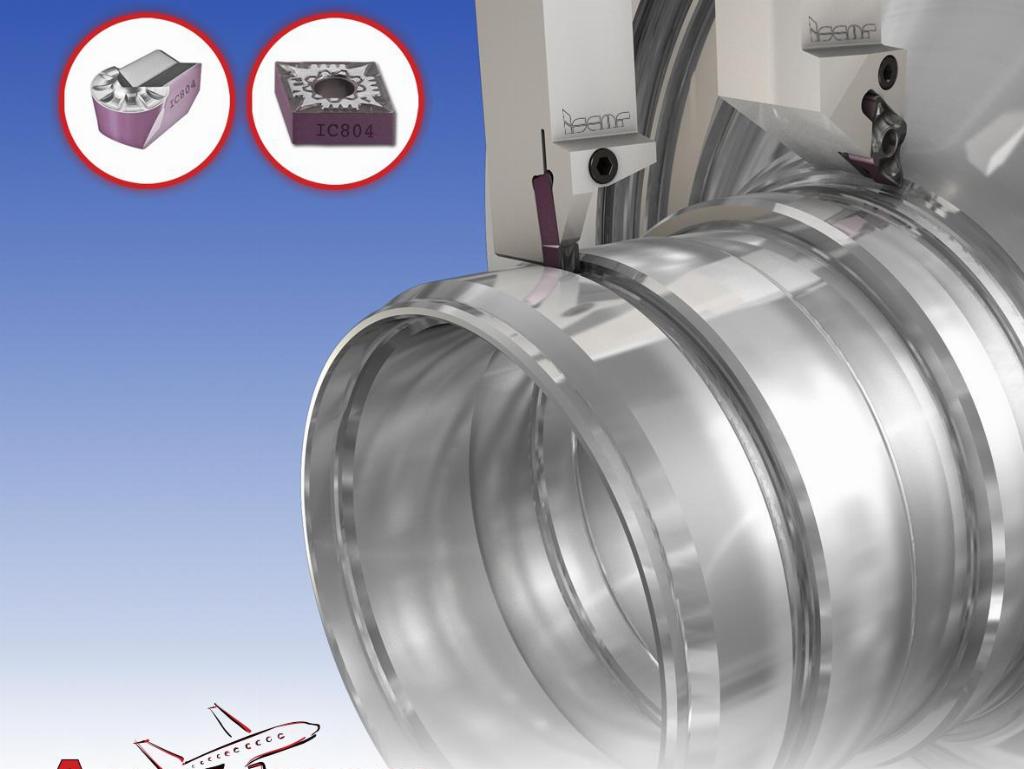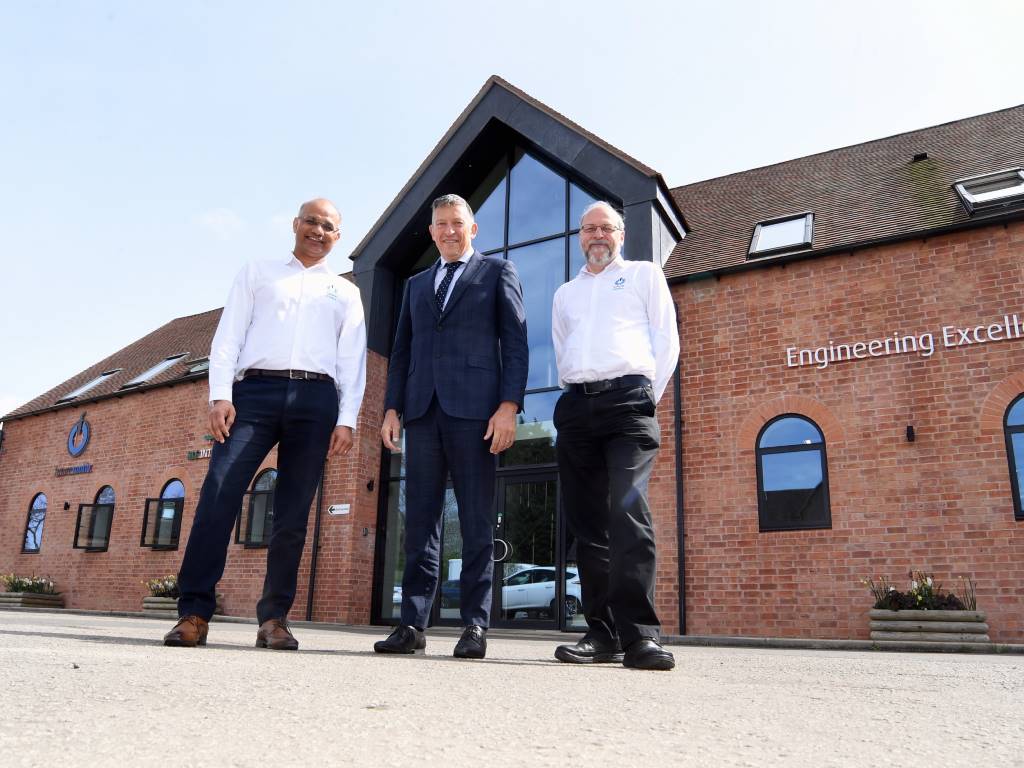Ceramic end mills help optimise aerospace part machining

With components made from nickel-based alloys becoming increasingly prevalent across the aerospace industry, the demand for optimised cutting tools continues to grow. In this article, Sandvik Coromant extols the virtues of ceramic tooling for these applications.
With components made from nickel-based alloys becoming increasingly prevalent across the aerospace industry, the demand for optimised cutting tools continues to grow. In this article, Sandvik Coromant extols the virtues of ceramic tooling for these applications.
For common operations such as shoulder and face milling, the machining of nickel-based materials remains challenging. Although offering excellent performances, these materials exhibit poor machineability due to their low thermal conductivity, potential for adhering to cutting tools and the presence of abrasive particles within the alloy structure.
Due to these issues, productivity with carbide tools tends to be low. In addition, part complexity means that some components demand extended reach, while process flexibility is another factor high on the wish list at many aerospace manufacturers. Here, new ceramic end mill technology has emerged to help meet these requirements, offering the potential to optimise the machining of aero-engine parts and provide significant competitive gain.
There are many challenges facing those tasked with producing aerospace engine components. Most such parts are manufactured from HRSAs/nickel-based alloys, which place a particular set of demands on production engineers looking to manufacture components like spools, turbine disks, combustion casings and blisks.
Up to 30 times more speed
Although many manufacturers use conventional solid carbide end mills, such tools have their limitations in terms of performance when it comes to nickel-based alloys. In a highly competitive global arena, aerospace machine shops are looking for next-level technologies capable of delivering a step-change in factors such as productivity and/or tool life.
Ceramic end mills can provide that very leap, offering up to 20-30 times more machining speed in comparison with solid carbide tools for operations such as shoulder and face milling. Such impressive gains can be achieved largely because ceramic cutters retain their hardness at the high temperatures which arise when machining nickel-based alloys.
The latest offer from Sandvik Coromant in this area is the brazed ceramic CoroMill 316 exchangeable-head end mill for roughing operations. In the first instance, the exchangeable head concept facilitates inherent process flexibility. Available is a six-flute version with a straight corner radius that delivers highly productive side milling operations, and a four-flute version designed to boost face milling thanks to its high-feed face geometry.
The ceramic substrate of the latest ceramic end mills allows for a different cutting process in comparison with traditional solid carbide tools. Importantly, the innovative CC6060 SiAlON grade is purpose-designed for the superior machining of nickel alloys, and is supported by negative geometry that provides a tough cutting edge. The latter also features a T-land for stable operations.
SiAlON carries a chemical composition of aluminium oxide and silicon nitride (Al203 + Si3N4), a combination that promotes high wear resistance, even at elevated temperatures.

Stable machining
While the brazed ceramic CoroMill 316 is best for difficult reachability applications, or to take advantage of exchangeable-head flexibility, Sandvik Coromant can also offer the ceramic CoroMill Plura end mill, for tasks where extra stability is pivotal to machining success.
In fact, a stable set-up is advised in all cases, and always without coolant application; machine shops should use pressurised air instead as coolant would simply burn at the high temperatures involved.
In addition, the use of coolant promotes thermal shocks and has a negative effect on tool life. Importantly, high spindle speeds are required, of at least 13,000rpm. Further recommendations include the use of down milling, as well as a programmed toolpath that keeps the tool in constant contact with the material.
To highlight the potential gains on offer, consider a recent customer trial involving an aerospace stabiliser made from aged Inconel 718 (370 HB). The trial, which demanded slot milling using a 12mm diameter CoroMill Plura ceramic end mill, took place on a DMG 60 eVo vertical machining centre.
By replacing the existing (competitor) solid carbide end mill with the ceramic CoroMill Plura, the customer was able to increase many of the cutting parameter significantly. For instance, cutting speed was increased from 25 to 500m/minute while feed speed could be elevated from 92.82 to 2,387.34mm/minute.
In addition, axial depth of cut was doubled, from 0.25 to 0.5mm. The same 12mm radial depth of cut was deployed, while feed per tooth was in fact reduced slightly from 0.035 to 0.03 mm/z.
The customer was highly impressed with the results. Metal removal rate (MRR) climbed from 0.28 to 14.32 cm³/minute, a remarkable gain of 5014%. In addition, tool life was extended by 300%.
Good chip evacuation
The large increase in cutting speed for this trial was significant. High cutting speed increases the cutting temperature, making the chips highly sheared. In fact, the process generates dust-like chips, which is good for chip evacuation using pressurized air.
Many additional trials have been conducted against competitor ceramic tooling. For instance, using identical cutting data, a 12mm ceramic end mill from Sandvik Coromant was put to the test against three competitor cutters when face milling Inconel 718 (43 HRC).
Machining parameters included 5mm radial depth of cut, 0.5mm axial depth of cut, 940m/minute cutting speed and 0.12mm/revolution feed rate. The Sandvik Coromant ceramic end mill completed a machining length of 90m, some 490% better than its nearest rival.
In fact, upon visual inspection, some of the competitor cutters started exhibiting tool wear after just 3m of machining length.
The results were equally impressive in side milling tests. Using the same material and cutter diameter, cutting tool data included: 5mm axial depth of cut; 0.5mm radial depth of cut; 600m/minute cutting speed and 0.12mm/revolution feed rate. Here, the Sandvik Coromant ceramic end mill outperformed the next-best cutter by 250%, completing a machining length of 16m before requiring replacement.
No white layer
Of particular note, no white layer formation has been observed when using the latest ceramic end mills from Sandvik Coromant. Tests have been conducted for a wide range of cutting speeds between 375 and 900m/minute without any evidence of this unwanted effect. White layer, which is thought to encourage cracks, is associated with temperature created on the surface of a workpiece followed by quick cooling.
Beyond shoulder milling and face milling, the latest ceramic end mills can also be used for pocket milling, helical interpolation, ramping and slot milling. Both CoroMill Plura and CoroMill 316 are part of the Sandvik Coromant ‘Optimized Solutions’ offer within the company’s Solid Round Tools range.
The newly introduced series also includes a ceramic ball-nose version of CoroMill 316 for blisk machining. This profile milling solution is suitable for both roughing and finishing operations.
Sandvik Coromant www.sandvik.coromant.com/uk













